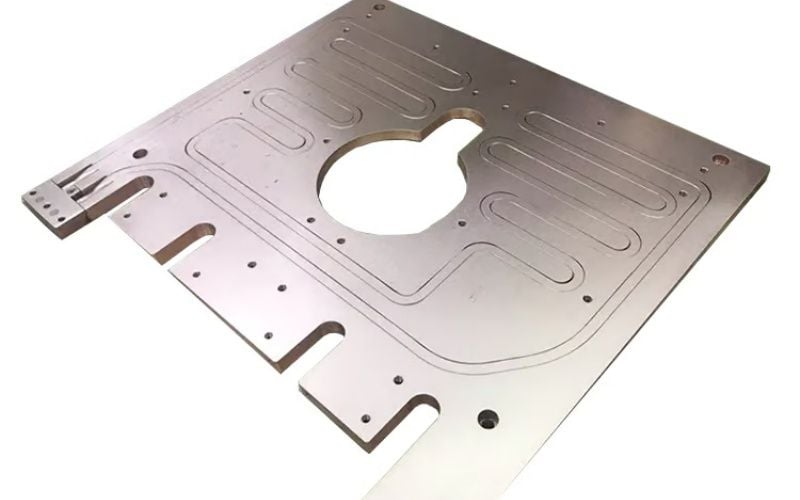What is a water cold plate?
A water cold plate is a heat sink used to dissipate heat from electronic components, microprocessors, or power modules. As the name suggests, it is designed to be in direct contact with water or coolant, enabling efficient and effective heat transfer. The cold plate comes in different materials and sizes, depending on the specific application.
How Does a Water Cold Plate Work?
The operation of a water cold plate begins when the hot electronic components make contact with the underside of the plate, transferring heat to it. The water or coolant flowing through internal channels absorbs the heat, and as the water flows, it carries the heat away from the component and further into the circulation system. The heat is then transferred to the ambient environment via a heat exchanger.
Advantages of Using a Water Cold Plate
One of the significant advantages of using a water cold plate is its ability to handle a large amount of heat load. Due to this characteristic, water cold plate is more efficient in removing heat than forced air cooling, especially where high cooling power is needed. In addition, water cold plate can reduce thermal resistance, providing better cooling performance than traditional air-cooling systems. Another advantage of using a water cold plate is that it is low-maintenance, durable and lasts a long time.
Applications of Water Cold Plate
Water cold plates can be used in various applications, including medical equipment, power electronics, aerospace, automotive, defense applications, among others. Water cold plates can also be used in computers, gaming consoles, and data centers, where high computing capacity generates massive heat loads.
Types of Water Cold Plates
The type of water cold plate used depends on the heat load requirement of the component, and the manufacturer's specifications. For instance, microchannel cold plates are suitable for low to medium heat loads, while jet impingement cold plates are best suited for high heat loads. There are also vacuum-brazed cold plates, which are preferred where size and weight are critical factors.
Factors to Consider When Choosing a Water Cold Plate
When choosing a water cold plate for your application, it is essential to consider the operating environment, size, weight, and coolant requirements. The plate must also be compatible with the electronic component's material as well as with the coolant used.
Design Considerations for Water Cold Plate
The design of water cold plate is critical in ensuring efficient and effective heat transfer. The size, shape, and placement of channels play a vital role in the cooling performance. Artificial induced turbulence design can also be used to enhance the heat transfer rate. Computational fluid dynamics (CFD) analysis is often used in the design process to predict the performance of the cold plate, including flow rate, pressure drop, and temperature distribution.
Manufacturing Process of Cold Plate
Manufacturing of water cold plates usually follows a multi-step process. The first step involves the design of the cold plate, followed by prototyping. Once the prototype is validated, the final cold plate is then manufactured using CNC machining, etching or embossing. The final stage involves assembling the finished cold plate into the final system.
The Future of Water Cold Plate
As technology advances, there is an increased demand for high-performance electronics, which generates substantial heat loads. Water cooling, especially water cold plates, is expected to play a crucial role in the future of cooling. As the electronic industry shifts towards renewable energy, water cooling solutions will be playing a more significant role in the design and development of green energy technologies such as electric vehicles, wind turbines, and solar power.
Conclusion
A water cold plate is an effective, durable, and efficient heat sink designed to transfer heat from electronic components. The cooling solution offers many benefits, including high cooling capacity, low thermal resistance, and durability. The future of cooling lies in water cooling, and the water cold plate will play a more significant role in high-performance electronics and green energy technologies.

